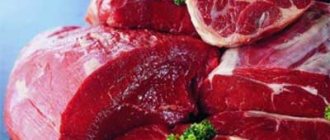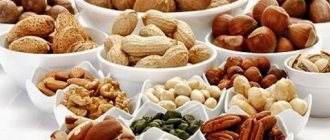- October 6, 2018
- Sports nutrition
- Denis Dmitriev
Taking slow-acting proteins helps in gaining muscle mass and losing weight. Athletes, following a prescribed training and nutrition program, often consume such protein in specialized sports nutrition. While almost no one has questions about the purpose of fast proteins, the situation with slow proteins is somewhat different. Most people still consider any protein mixtures in stores to be “chemicals” and doping, which is a complete misconception.
Functions of casein and its analogues
A protein called casein most often represents slow proteins in sports nutrition. After consumption, casein is absorbed by the body for quite a long time, since the absorption of the substance from the gastrointestinal tract has a low rate. Complete absorption occurs approximately 6-8 hours from the moment of administration.
Soy protein or edible plant proteins, as well as proteins of other nature, can replace casein. However, all of the above casein alternatives are embedded in a special matrix that significantly slows down enzymatic hydrolysis. Because of this, analogues are characterized by weak thermogenic and anabolic effects, low biological value and inferior amino acid composition. It is for this reason that casein alternatives are used only as excipients in combination with casein itself.
Products with slow proteins
Almost all plant proteins are slow. Their basis is the substance casein.
The main ones are legumes, grains, some nuts, and mushrooms. The slowest and most useful are cereals with grains that have not been peeled. They take a very long time to digest, providing stable satiety. It is recommended to soak them before cooking; this will speed up cooking and help significantly increase digestibility. Low-fat cottage cheese is also a slow-type protein.
The quality of protein and the speed of its absorption is indicated by such an indicator as the absorption coefficient. For slow proteins this figure is significantly less than 1, for fast proteins it is equal to 1 or slightly less than this figure.
Here is a list of the main slow proteins:
- soybean – it contains 35 protein per 100 grams, absorption coefficient – 0.91;
- beans - protein - 22, absorption coefficient - 0.68;
- peas - protein - 23, absorption coefficient - 0.67;
- buckwheat - protein - 13, absorption coefficient - 0.66;
- rye - protein - 11, absorption coefficient - 0.63;
- corn - protein - 8, absorption coefficient - 0.60;
- oats - protein - 12, absorption coefficient - 0.57;
- rice - protein - 7, absorption coefficient - 0.55;
- wheat - protein - 13, absorption coefficient - 0.54;
- peanuts - protein - 26, absorption coefficient - 0.52;
The products listed above are from the main list. With their help, you can make many different dishes with “speedy” protein.
Application and purpose
Slow protein is most popular among bodybuilders working on muscle definition, gaining muscle mass or reducing fat mass. The use of fast and slow proteins is also recommended for those who are engaged in strength training or work in cycles with increased load.
Losing weight with casein has no special contraindications. However, consulting with your doctor will be helpful before you start taking protein instead of food during the day. The doctor will draw up an optimal treatment plan based on the individual characteristics of the body and the goals set.
Secrets and facts about casein formulas
Experts have compiled a list of important distinguishing points that should be taken into account when taking slow proteins:
- Casein is considered a good option for forced fasting. When an athlete does not eat food for a long time, muscle fibers begin to gradually break down. Slow protein allows you to preserve muscle mass in such situations.
- Casein itself takes much longer to digest in the human digestive system than any whey protein, but it also slows down the absorption of all other incoming proteins.
- The best time to take slow protein is in the evening or at night before bed. During the period of sleep and rest, catabolic processes begin in the body. Only protein can slow down the action of such processes.
How to take whey protein?
Whey protein is divided into three types:
- Hydrolyzate.
- Concentrate.
- Isolate.
Whey protein hydrolyzate is a mixture of constituents resulting from the breakdown of whey protein isolate.
Concentrate is a form of protein that is very common among users because it costs little but is effective. In addition to protein, it contains minerals, carbohydrates and saturated fats.
Isolate . If we compare it with concentrate, this form has a higher degree of purification. The proportion of impurities does not exceed ten percent.
Taking Whey Protein
Hydrolyzate, isolate or concentrate are taken in different ways, depending on the needs. Thus, whey protein hydrolyzate is necessary if it is necessary to quickly compensate for the lack of amino acids, since it begins to be quickly absorbed. It is often taken at the end of a workout, as well as before it begins. There are no digestive problems after taking whey protein hydrolyzate.
The duration of absorption of isolate is longer - 30-40 minutes, so it is better to consume it 30-40 minutes before the start of training.
Protein concentrate can be taken after the training process, as well as during it. You can drink it in the morning, immediately after sleep, and also before bed.
Casein research by scientists
A 1997 study by French scientists showed that casein prevents proteins from breaking down in the body 34% more effectively. No such effect was found in whey protein. According to the data presented, fast proteins stimulate the production of muscle protein 68% more effectively, and slow ones - only 31%.
After some time, the same scientists came to the conclusion that the balance of protein in the body was better in those young people who took casein, rather than simple whey or any mixture of free amino acids.
How to take protein correctly? Dosage
Physiologists have long carried out all the research they are interested in and have found that for effective muscle growth, a person needs to consume at least one and a half grams of protein per day per 1 kilogram of weight. Or better yet, 2-2.5 grams. This means that the dosage will be different for each person. A person who weighs 80 kilograms should not consume the same amount of protein as a person whose weight is around 120 kilograms. You can always get the information you need on this topic by reading the directions on the package. It always contains information about dosages and all the necessary recommendations.
Features and tips for gaining muscle mass
You need to take slow-acting proteins just before bed. Thus, during sleep, the muscles will be steadily fed with amino acids. Another scenario when you should not deny yourself casein is considered to be long breaks in meals. Drinking a portion of slow proteins at night or before a long fast for several hours is necessary in a strictly defined amount. Experts advise taking about 30 grams of casein mixture.
Obese and overweight athletes usually allocate 10-30% of the total complex of protein sports nutrition to slow proteins. The long period of digestion of casein in the stomach approximately coincides with the standard eight-hour sleep of most people, and therefore can negate all the negative consequences of the catabolism of muscle mass during a person’s night’s rest.
Sources of fast proteins
The best “fast” protein products have not only a high absorption rate, but also a minimum of fat, as well as a high content of protein itself.
Here is a list of such “fast” proteins:
- eggs - protein per 100 grams - 13, absorption coefficient - 1.0;
- kefir, milk - protein - 3, absorption coefficient - 1.0;
- cottage cheese - protein - 17, absorption coefficient - 1.0;
- cheeses - protein - 25, absorption coefficient - 1.0;
- beef - protein - 19, absorption coefficient - 0.92;
- poultry meat (turkey, chicken) - protein - 21, absorption coefficient - 0.92;
- fish and various types of seafood - protein - 21, absorption coefficient - 0.90;
- lean pork - protein - 16, absorption coefficient - 0.63.
Features and tips for losing weight
The schedule for taking slow protein for weight loss and the required dosage are generally similar to those for building muscle. It is also possible to replace one or two full meals a day with casein sports nutrition on a regular basis. You can achieve the best results when losing weight only with the parallel use of whey protein, in combination with which slow protein acts more effectively.
Portions of casein in this case are somewhat more modest - it is enough to drink about 15 grams of proteins at one time. Casein has properties that regulate appetite. Uniform saturation of the body with amino acids allows you to suppress the feeling of hunger over a fairly long period of time.
Experts advise paying attention to micellar casein, as it takes the longest to be absorbed in the body. Eating this type of slow protein a few hours before going to bed will make the weight loss process very effective. The fact is that micellar casein, being the longest protein in terms of time spent in the body, lingers in the stomach and nourishes a person for 12 hours, which means this protein will cope perfectly with suppressing appetite in the evening and will saturate the body until waking up.
The Best Sources of Protein Before Bed
So, we've established through scientific research that protein before bed is a good thing. It will help fill the overnight gap in the muscle building process to increase your overall results in 24 hours.
Let's now talk about some of the best foods and additional sources of protein to eat before bed.
Whole food sources of protein:
- Beef
- Lamb
- Chick
- Turkey
- Pork
- Fish
- Eggs
Sources of protein in supplements:
- Whey
- Casein
- Egg
- Soy
- Hemp
Of these additional protein sources, whey and casein are of higher priority.
Whey powder is the most well-known and easily available protein supplement. It is a dry, concentrated form of liquid whey, a byproduct of cheese production.
Consider it the standard by which other proteins are judged; whey requires relatively little time to digest, absorb, transport, and metabolize.
Within 30-60 minutes of intake, the level of amino acids in the blood increases, which get there from whey protein. After approximately one hour, protein synthesis occurs.
We said above that muscle growth depends on the level of protein synthesis in the muscles and must exceed muscle destruction?
This is exactly what happens, especially in the short term, when you consume fast-acting proteins like whey protein.
Casein, like whey, is obtained from milk. Unlike whey, which naturally comprises about twenty percent of the protein in milk, casein makes up as much as eighty percent.
Both whey and casein are “complete,” containing all nine amino acids essential for human health, and are excellent sources of leucine, isoleucine, and valine—anti-lipogenic, nutritional branched chain amino acids (BCAAs) that aid in muscle protein synthesis. preventing muscle catabolism and reducing visceral fat.
Compared to whey protein, casein is “slow,” requiring three to four hours to reach peak amino acid levels and protein synthesis in the body.
This may sound like a bad thing, but it's good news because casein, due to its slow-acting properties, helps prevent catabolism longer than whey, while also prolonging muscle protein synthesis.
You may want to consider taking both whey and casein at night. This is not a simple question. Each protein has its own strengths, and combining them provides the benefits of fast and slow burning proteins.
With that said, as we've already seen, a protein shake before bed containing 40 grams of casein is effective in increasing muscle protein synthesis within a few hours of restful sleep.
Testosterone factor
There's a study in the aptly named journal Sleep that shows that people who slept 8 hours had a slightly greater doubling of testosterone levels than those who slept 4 hours.
The important point is that sleep—especially enough sleep—results in testosterone spikes.
Testosterone is highly anabolic and plays an essential role in muscle formation.
Getting enough sleep prevents you from entering the deepest stage of sleep, during which muscle fibers heal and grow, and causes large releases of testosterone.
It's clear that sleep and protein are a powerful anabolic mix.
Your muscles grow when they are rested - outside of the gym, and when is the body more rested than when it sleeps?
Sleep is classified into stages, and during stages 3 to 4, tissue repair, repair, and growth occur.
At this stage, growth hormone and testosterone are released, blood supply to the muscles increases, the muscles completely relax, and breathing slows down.
NREM sleep occurs late at night and it is understood that the closer to the start of sleep protein is consumed, the longer it will take for amino acids to circulate and muscles to repair and grow.
Deep, restorative sleep, combined with protein eaten before bed, is an effective way to increase muscle mass.
Combined use with fast protein
Often people pursue the goal of getting rid of fat mass or gaining muscle mass. Consultants in sports nutrition stores regularly hear from customers the question of which slow protein is the most effective. The essence of the answer is that not a single mixture of slow proteins by itself is capable of producing the desired result, unless its use is combined with sets of fast proteins. Therefore, the most suitable option is the use of complex mixtures of proteins.
By combining several types of protein, the body constantly receives a sufficient amount of amino acids, and a “smoldering” protein effect is achieved. As part of a comprehensive sports nutrition, some proteins with their advantages always compensate for the shortcomings of others. Separately taken fast and slow proteins show less efficiency also for the reason that there are no substances to level out their disadvantages. Experts in the field of dietetics and sports nutrition agree that complex protein mixtures are deservedly called universal.
What foods contain protein?
Food of animal origin contains the most protein. This is meat, including fish, cottage cheese, eggs, and other dairy products. There is quite a lot of protein in cereals, it is not for nothing that parents forced many people to eat cereals from childhood. Rice, buckwheat, oats, wheat, oatmeal will give you the required portion of proteins.
A rich source of protein are nuts. These are cashews, almonds, pine nuts. Some people have an intolerance to a certain type of nut. In general, almonds, hazelnuts and cashews are very healthy fruits. They are very useful for the human body.
Legumes are another source of protein. These include: peas, beans, lentils. But to replenish protein with vegetables and fruits, it is enough to eat cucumbers, zucchini, cabbage, avocado, and figs. Everyone needs protein, but you shouldn't just take it. The body has enough protein for its normal functioning. Protein is only necessary if you need to build muscle, lose weight, or have protein deficiency. Drink protein only when needed and do not replace it with food.
A large amount of protein is found in products of animal origin: meat, fish, cottage cheese, eggs, cheeses and other dairy products.
Possible harms of taking proteins
No matter how tempting it may be to speed up the process of muscle growth or lose a couple of extra pounds in a short time, you should consult with your doctor before taking it in any case. First, you should familiarize yourself with a number of known contraindications to taking slow or fast proteins.
- The cardiovascular system. Problems are unlikely to occur, and no deaths have yet been reported due to the use of a low-carbohydrate, high-protein diet. However, doctors claim a certain correlation between taking large amounts of animal proteins and an increased risk of coronary artery disease.
- Kidney diseases. The research data is as contradictory as in the case of heart problems. According to some sources, regular intake of increased amounts of protein can cause the formation of kidney stones.
- Carcinogenic effect. According to scientists, the risk of developing cancer when taking protein mixtures in some situations becomes higher. However, doctors do not yet have a clear clinical picture on this matter.
In addition, the skeletal system is sometimes negatively affected. The use of sports mixtures with a high protein content is contraindicated for people with diagnosed diabetes mellitus.
Having familiarized yourself in detail with all the nuances and secrets of protein supplements, all that remains is to decide whether to include sports nutrition in your daily diet.
If you don’t get enough protein, then what?
What will happen to a person if he does not meet his daily protein requirement? Let's draw a parallel with a construction site, where workers erect a building using bricks. And one fine day, the bricks were not delivered, what will happen to the building? Construction will stop; workers don’t know what to do. And the more such shortcomings there are in the bricks, the more braking will increase.
When a person does not set himself the goal of becoming an Olympic champion, then sport is for him an activity for his own pleasure, with the help of which the body heals and renews itself. This is like a repair - we replace old protein compounds with new ones. That is, the muscles grow, the skin is renewed.
When you do not have the required amount of building materials for a construction project, the process will simply stop, at best (they will get drunk) or go home from doing nothing. The athlete begins to feel unwell and growth slows down. I’m taking the question from your lips, what if a person, a non-athlete, does he need additional protein intake?
It depends on the nutrients that a person consumes. As statistics say, most people eat incorrectly, their daily diet is unbalanced, which is why we get sick and grow old so early. There are certain standards for the ratio of carbohydrates, proteins and fats in the body for normal human development. It is 60% carbohydrates, 30% proteins and 10% fats.
Due to the fact that food is available, the proportions have changed for the worse. Fats and proteins swapped places. Throughout the history of development, humanity has never consumed as much fatty foods as it does now. Our ancestors were carbohydrates, which included healthy fiber. Plus, there are squirrels that they received from their hunt for animals. Therefore, since the very beginning of humanity, the body, accustomed to higher percentages of protein in food, cannot adapt to fats.
Our body, organism and health suffer from such a disproportion. The first thing that the disproportion hits is cardiovascular diseases. The size of our heart, like an engine, does not change, but the body becomes larger due to fat. An engine from a Zaporozhian ZIL will not pull with such intensity.
A bunch of other diseases begin, stagnation of bile, lipid metabolism disorders - obesity, curvature of the spine, and so on, impotence and infertility. There are no organs in the human body that are not affected by the disproportion of fats and carbohydrates, as well as protein in the body. It is easier and cheaper to buy fatty foods, because they are higher in calories and more accessible. Popular among the poor and poorly educated segments of the population.
Why are Americans fat?
It is often said that Americans are a fat nation. Most fat people live in poor neighborhoods. And all because he does not have money for proper nutrition and for obtaining certain knowledge to change this diet.
People who have achieved something in life, and therefore have more money and knowledge, often go to fitness gyms, eat right, take care of their body and actively use nutritional supplements of sports origin - proteins.











